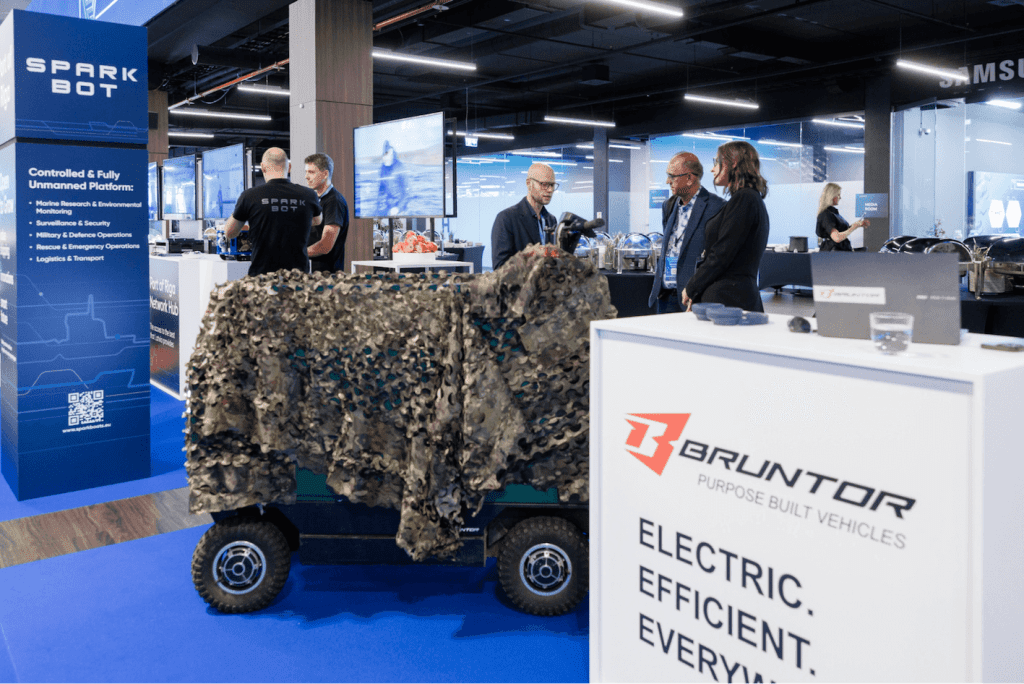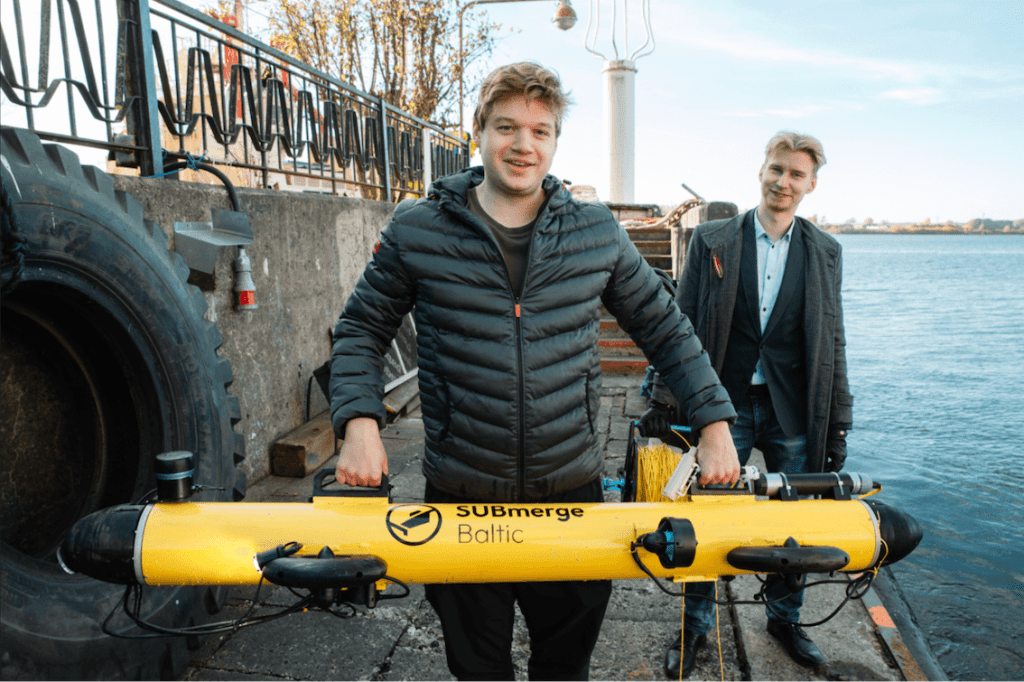This year, an undeniably central topic was defence. The expo zone “Startup Corner” featured many Latvian dual-use and defence tech startups, who were attracting the attention of delegations, policymakers, industry figures, and other attendees.
Here are some of the startups at the Techritory event that were drawing in the crowds, according to Labs of Latvia.
Exonicus – VR medical training

A well-known defence tech startup, Exonicus has already demonstrated success through landing multiple contracts with US military organizations, as well as other NATO partner countries.
The company has developed VR and AR software to educate medical personnel by simulating possible medical scenarios in a military environment. This way, field medics are able to gain experience without having to enter conflict areas, thus becoming better prepared for when they do.
Founder Sandis Kondrats emphasized that Exonicus’ aim is to reduce mortality rates through training, and that the software has already proven to have increased training levels for various personnel.
Fun fact: Exonicus’ history can be traced back to an anatomy book and VR tool for artists and med students.
Bruntor – 4-wheel cargo scooters

While Bruntor is known for its cargo delivery scooters, the robust 4-wheel-drive vehicle lends itself well to dual-use scenarios.
As it has been tested in the harshest of conditions in Latvia – in rain, snow, ice, on streets with cobblestones and patchy asphalt, Bruntor founder Raimonds Jurgelis believes that it is the most resilient vehicle on the market.
Fully electric, the vehicle can travel over 100km on one charge, and carry loads of up to 120kg to difficult-to-reach places.
Fun fact: Bruntor tested its vehicle in the Ķengarags neighborhood of Riga to make sure that it can deal with various states of terrain.
SUBmerge Baltic – underwater drones

SUBmerge Baltic create underwater drones that can be guided on predefined paths to execute a variety of tasks.
Depending on the hardware that is mounted on them, they can perform video or audio monitoring, which is particularly useful for port environment infrastructure inspection or, for example, underwater cable inspection. They can also mount other modules to the drone to fulfill offensive tasks.
Their PIKE autonomous underwater vehicle (AUV) features a range of 150km, and can reach depths of 500 meters, carrying a 20kg payload.
Fun fact: SUBMerge Baltic was the winner of TechChill’s 2024 Fifty Founders Battle.
Beyron – autonomous drones for industrial applications

Beyron presented fully autonomous drone inspections for industrial applications. The drone is set a pre-defined task (for example, monitoring the state of a bridge), and the drone completes the flight, the inspection, and then returns to a docking station where it is sheltered from the environment, and can prepare for the next mission.
Meanwhile, the video footage of the inspection is automatically analyzed, with any irregularities flagged. The drone does not require piloting, and they can reach difficult-to-access points without the need for human intervention.
Beyron’s drones are useful in military scenarios for intel and surveillance. The drone is equipped with 4K optics, thermal sensors, and AI tracking. It flies pre-planned or reactive missions with zero pilot input, delivering visual intelligence in any light, weather, and terrain.
Fun fact: The docking station allows for rapid charging, meaning with two Beyron systems, they can ensure 24/7 surveillance.
Natrix – unmanned ground vehicle

Natrix is a dual-use unmanned ground vehicle (UGV), which can be used for logistical, reconnaissance, personnel transport, and other applications. Thanks to its high payload capacity of 200kg, it can be used to carry both heavy equipment or to safely transport military personnel away from the frontline.
The vehicle supports a variety of connectivity standards, ranging from radio communications to 4G/5G, wire, and wifi. It can drive for up to 4 hours, and runs at a max. speed of 20km/hr.
Natrix has been tested in Ukraine in various demonstrations together with the Latvian National Guard, among others. It is already in production, with units already being delivered to Ukraine.
Fun fact: Natrix participated in the Namejs military training exercise, you can watch a video from the vehicle’s perspective here.
Select text and press Ctrl+Enter to send a suggested correction to the editor
Select text and press Report a mistake to send a suggested correction to the editor
Tell us about a mistake
